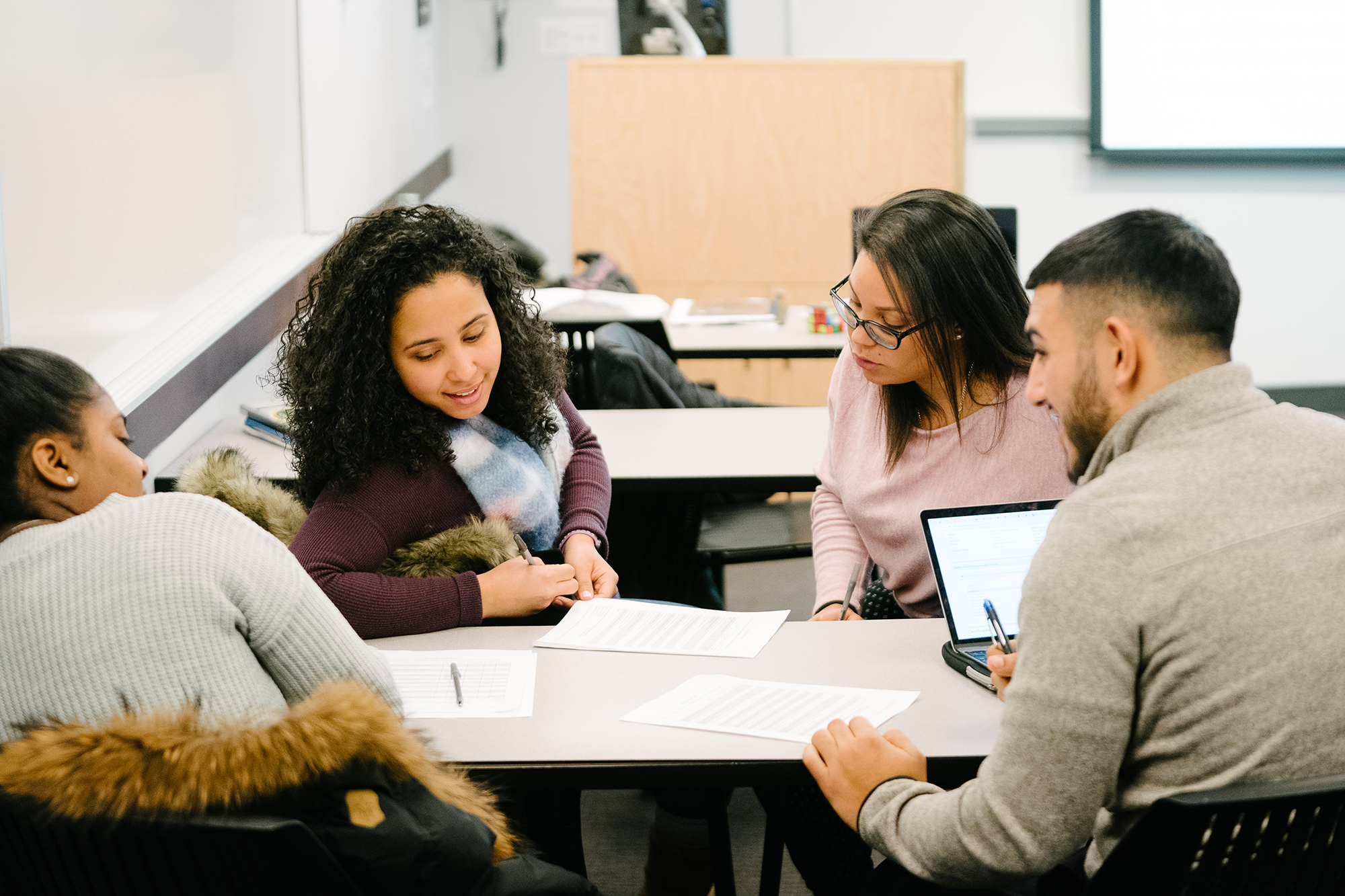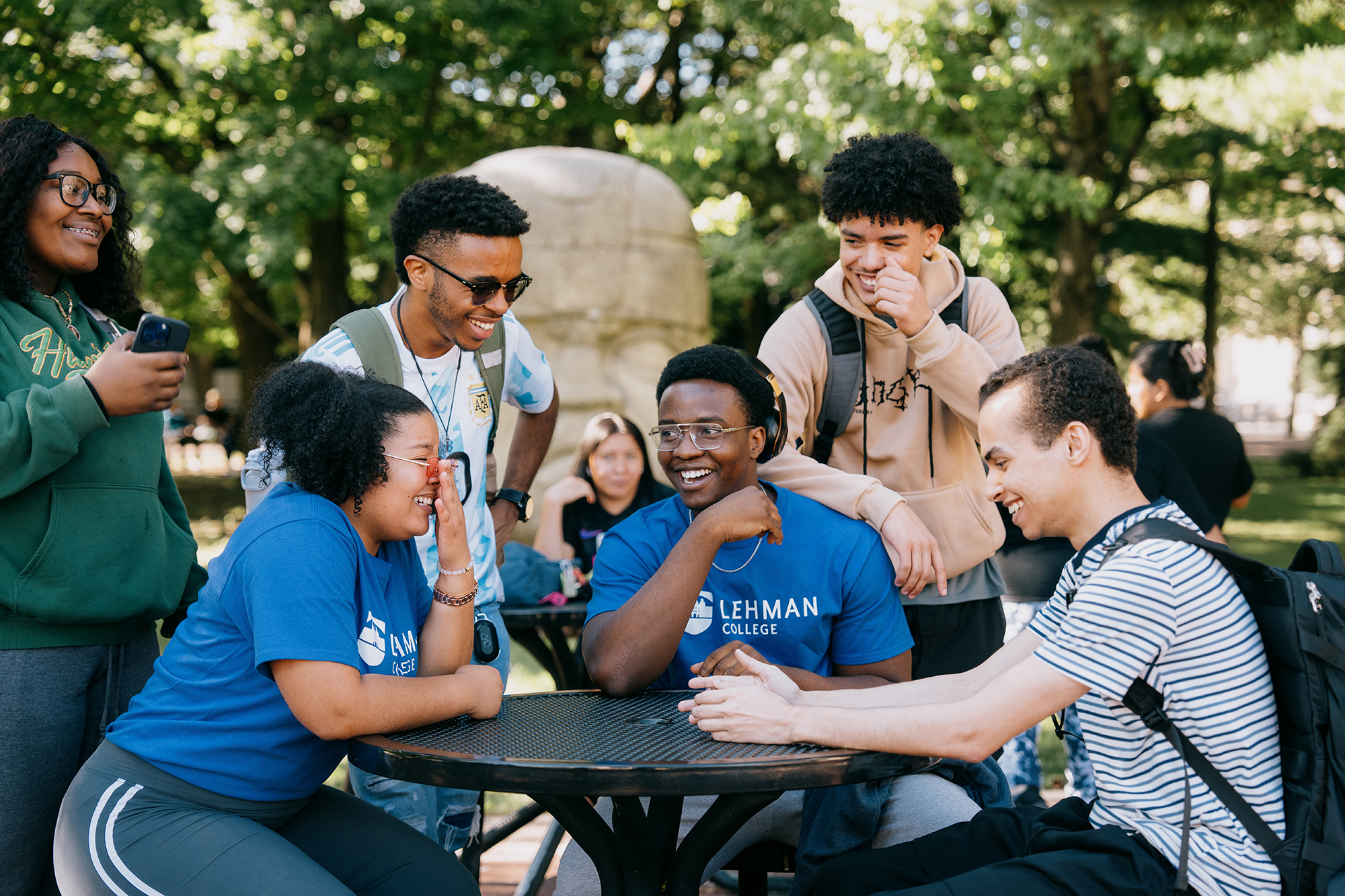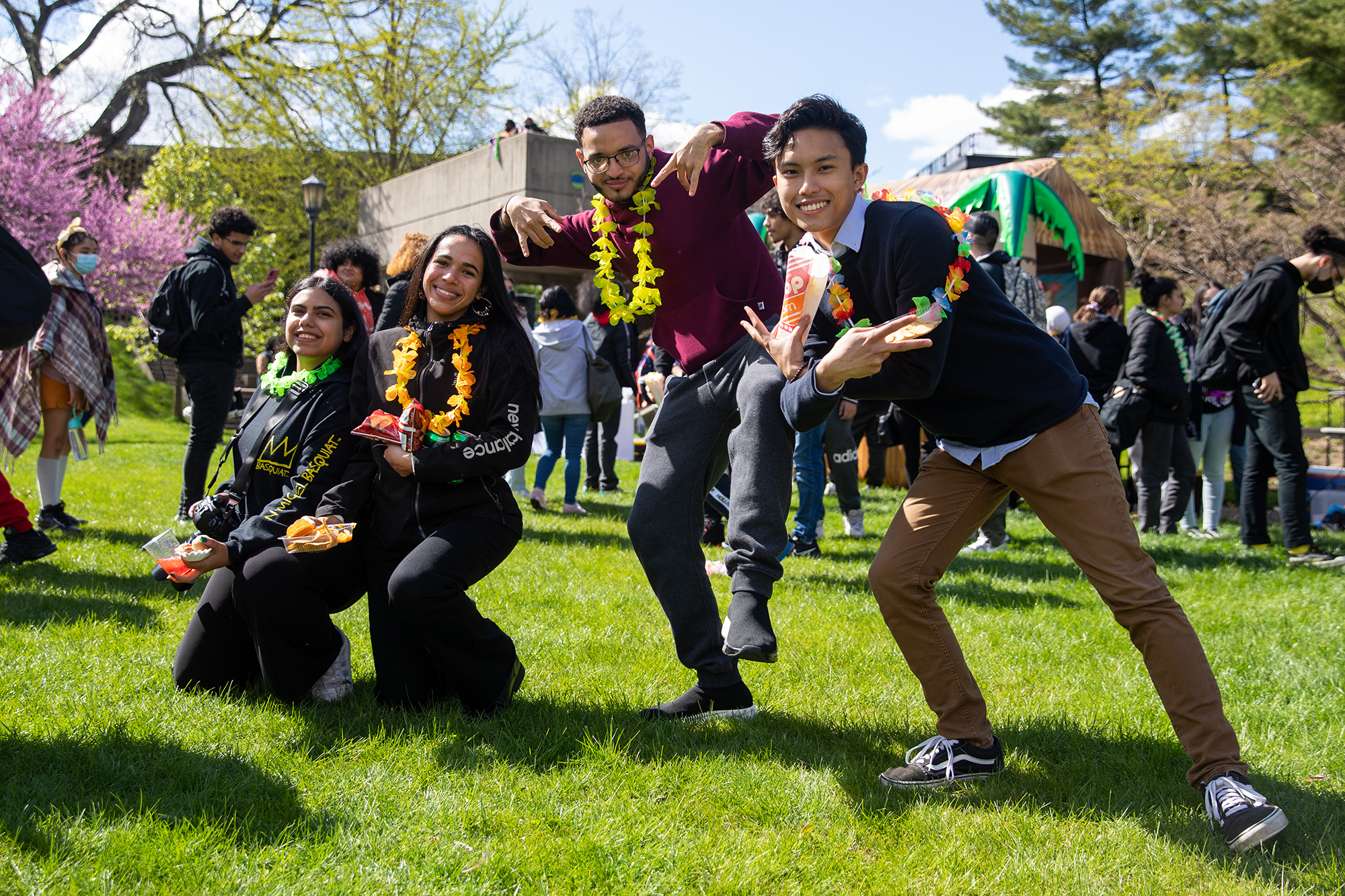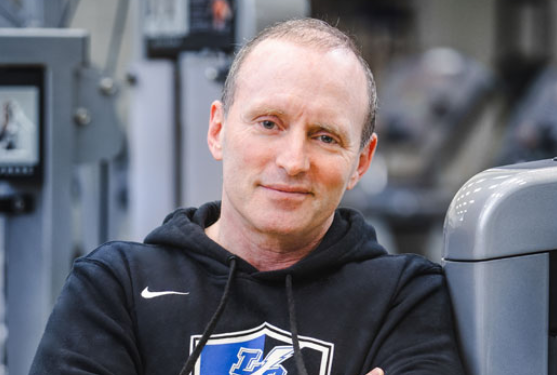- Lehman College >
- News >
- 2020 >
- Lehman Students Add Their Voices to Historic Anti-Racism Movement
News
Search All News
Friday, January 2, 2026
CONTACT
Office Hours
Monday - Friday 9am - 5pmClosed Sat. and Sun.
RELATED STORIES
December 29, 2025
December 29, 2025
Lehman Students Add Their Voices to Historic Anti-Racism Movement
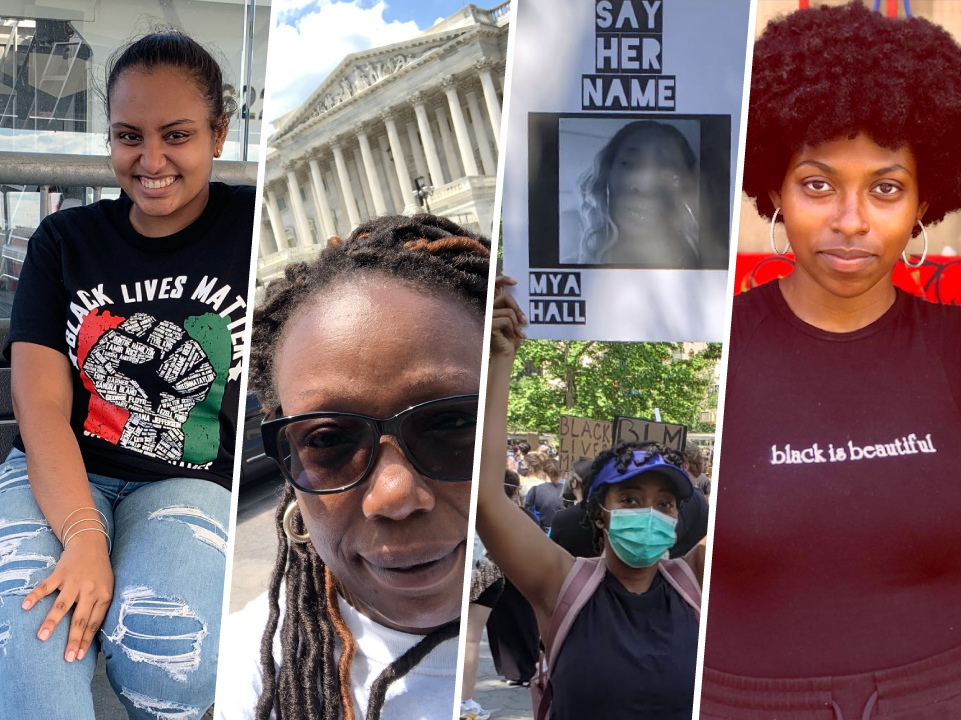
From left, racial justice activists and Lehman students or recent grads Gugeeta Cheetram, Hope Sanders, Quameisha Moreno and Crisbelly Contreras.
August 26, 2020
Lehman students were among the estimated 15 million to 26 million people who participated in Black Lives Matter protests this summer, calling for police reforms and racial equality in the wake of George Floyd’s death. Some had never participated in protests of that magnitude; others, long involved in activist work but hampered by the COVID-19 pandemic, found new ways to show their support. And many learned lessons about combatting systemic racism that they say will stay with them well past this moment. We spoke with five students and recent graduates about their experiences.
“It’s a multifaceted movement.”
In the weeks after Floyd was killed, Crisbelly Contreras, a junior Africana Studies major, struggled with the feeling that she had not done enough to demand justice for him, or Breonna Taylor, or the many other victims of police brutality whose names she called out at protests.
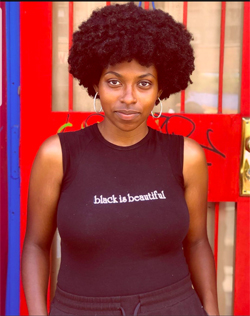 She’d signed every petition she came across, emailed government officials, and joined two Black Lives Matter demonstrations. She used money from her job with the CUNY Census Corps to donate to bail funds for protesters who’d been arrested. And she turned to her art—Contreras sings, raps, plays the ukulele and does spoken word poetry—an outlet through which she has often explored issues around race. She joined a community of performers on Instagram who used the platform to respond to the moment. Still, she says, it was easy to feel helpless sometimes, particularly given the convergence of two tragedies: Floyd’s killing and the COVID-19 pandemic.
She’d signed every petition she came across, emailed government officials, and joined two Black Lives Matter demonstrations. She used money from her job with the CUNY Census Corps to donate to bail funds for protesters who’d been arrested. And she turned to her art—Contreras sings, raps, plays the ukulele and does spoken word poetry—an outlet through which she has often explored issues around race. She joined a community of performers on Instagram who used the platform to respond to the moment. Still, she says, it was easy to feel helpless sometimes, particularly given the convergence of two tragedies: Floyd’s killing and the COVID-19 pandemic.
Contreras, 22, lives with her grandparents and says she worried about contracting the virus and passing it on to them, particularly her grandmother who has pre-existing conditions. Whenever she or her grandfather left home and returned, she says, it kicked off a complicated routine of stripping and sanitizing at the door. That meant doing fewer in-person protests than she would have liked. “If it was up to me I would be going to every march, but with COVID in the mix I know I can’t,” she said. “So I had to deal with the guilt of me not being able to help out at the maximum capacity.”
Contreras had been in her early teens when Eric Garner told police he couldn’t breathe and the deadly shootings of Trayvon Martin, Tamir Rice, and Michael Brown galvanized community groups. But this time she was an adult, and like so many others under the city’s stay-at-home-orders, able to give her complete focus to the issue. Even so, she has not watched the full video of Floyd’s killing. “It shouldn’t take seeing the video to be stirred to action,” she said, noting that she is troubled by a constant parade of Black bodies, Black trauma, and Black death on social media. “I didn’t see the need to watch eight minutes of torture.”
She’s intent, as well, on promoting intersectionality in racial justice spaces. “The conversation coming into play now is about the fact that other voices are being silenced in this movement,” Contreras says. “We’re saying Black lives matter but there seems to be a hierarchy. Cisgendered men’s voices are the ones being centered and focused on the most.” To combat that, she said, she and others are using the #SayHerName hashtag, which was created by the African American Policy Forum and the Center for Intersectionality and Social Policy Studies to bring awareness to the stories of Black women and girls who have been victimized by the police.
In the months since the protests began, she has learned to better pace herself and that every action against injustice, large and small, counts. “I’m trying to teach myself to be more compassionate with myself,” she said. “It’s a multifaceted movement with different parts to it and different ways to contribute.”
She also says she has surprised herself with the influence she has already had. After going to a Take Back the Bronx march where she witnessed police antagonize and become aggressive with protesters, using tear gas unnecessarily, she took to social media.
“It impacted me so much that I went on IG the day after and shared my experience,” she said. “More than 100 people had been arrested, and I told people I wanted to raise money to help bail them out.” She used a planned performance on IG Live as an opportunity to connect donations and was able to raise $175 in a few hours. “I don’t have a huge following, but even with my small platform I was able to contribute to that cause,” she said. “It was a moment of validation, knowing that I have a voice, and even if I think its small, it’s still having an effect.”
“We need every little bit.”
For Hope Sanders, a third-year Social Work major at Lehman, the goals of the Black Lives Matter movement had been a key part of her life long before she’d learned of the hashtag.
 At 46, she is a familiar face in New York’s criminal justice reform circles. Working with organizations such as College & Community Fellowship (CCF), which offers educational and career support to formerly incarcerated women, she’s fought to lift the 26-year-old ban on Pell grants for inmates. She’s also part of the #BEYONDRosies campaign, which pushed the city to close the women’s jail on Riker’s Island—notorious for abuse and unsanitary living conditions—and replace it with a facility more focused on treatment than punishment. And she sits on the Reentry@Lehman Committee, which supports students who have either experienced incarceration or have family members in the system.
At 46, she is a familiar face in New York’s criminal justice reform circles. Working with organizations such as College & Community Fellowship (CCF), which offers educational and career support to formerly incarcerated women, she’s fought to lift the 26-year-old ban on Pell grants for inmates. She’s also part of the #BEYONDRosies campaign, which pushed the city to close the women’s jail on Riker’s Island—notorious for abuse and unsanitary living conditions—and replace it with a facility more focused on treatment than punishment. And she sits on the Reentry@Lehman Committee, which supports students who have either experienced incarceration or have family members in the system.
“I had always been an activist. I was always the one who spoke out about stuff,” she said. That passion is partly her personality, and partly a reflection of lived experience. Sanders spent 18 years in prison, for a crime she committed as a teenager. Still, people are sometimes surprised that when she speaks about a broken system that preys on people color, she has kind words for some of the officers she’s encountered there.
At the time of her arrest, Sanders—the baby of the family who’d done well in school—was a kid who had gotten caught up in her environment. Her mother, a barber, worked 12-hour days; her older brothers had grappled with drugs or prison themselves. Not everyone saw her that way. “Structurally, institutions look at our kids like they’re grown,” she says, noting the practice has its roots in slavery. “It’s one of the things that makes my blood boil.” However, some of the officers in her facility saw her for what she was: a child.
“Believe it or not I was blessed to be placed in a facility with a superintendent who didn’t use the prison as a punishment, she used it as a true way of rehabilitation,” Sanders said. “One particular officer to this day I call mom because she pretty much raised me. She didn’t treat me as though I was an inmate and she was an officer... I used to be confused like, you’re wearing a uniform, you aren’t supposed to help me.”
The point, she often tells people, is this: It isn’t about the individuals within the system, but the system itself. “I believe in holding people accountable, absolutely,” she said. “But I started looking at the bigger picture.”
Sanders is also quick to tell people to think beyond whatever their ideas about activism are.
She is turned off, she said, by a group she encountered that seemed to dismiss any action less than a direct confrontation with police.
“I didn’t like the idea of them trying to belittle people’s roles in activism,” she said. “You have the ones that are out there taking the rubber bullets, the pepper spray and all that—and listen we need them out there. But there are so many ways to do it, like educating people, if you have a social network, and donating a dollar.” That’s especially true during the pandemic, where people like Sanders, who has battled health issues in the past, could be at risk in mass protests.
Sanders was recently named a 2020 Women's Forum Education Fund Scholar; the fund provides grants to women 35 and over who’ve overcome significant adversity. She immediately donated a chunk of it to bail funds for protesters.
In the end, she says, activism is all about action. “It could be whatever action. We need every little bit of it,” she says. “I was telling [some activist friends] that while you’re out there in the streets I’m going to sit up in the capital and be the voice in the room to change minds.”
“This was a protest required of every community member, regardless of color.”
At the start of 2020, Gugeeta Cheetram thought she knew how her life as a student activist might shape up this year. A senior Political Science major and Human Rights and Peace Studies minor, she’d vowed to immerse herself in campus organizing. “In my junior year I wasn’t involved in student government or any clubs and organizations on campus, and it’s harder to be a part of the conversation that way or to really give back to the Lehman community,” she said.
 In February, she gave up a job as a cashier at Rite Aid so she’d have time to serve in the University Student Senate (USS). And, after two unsuccessful bids for the Student Government Association, she won a seat as vice president in May. “I’d told myself that no matter how many times I ran if didn’t get it I’d keep trying,” she said. “It’s something I’m passionate about.”
In February, she gave up a job as a cashier at Rite Aid so she’d have time to serve in the University Student Senate (USS). And, after two unsuccessful bids for the Student Government Association, she won a seat as vice president in May. “I’d told myself that no matter how many times I ran if didn’t get it I’d keep trying,” she said. “It’s something I’m passionate about.”
However, Floyd’s death and the wave of protests it set off around the country would help her clarify what she needed to do as a community leader.
She spent the first few days watching the demonstrations across the country unfold on Instagram. “It was hard to sit at home and not be able to do anything about it—that hurt the most, although I know it was nothing compared to what other people were going through at the time, especially Black people.”
Cheetram, who is of Indian descent and emigrated from Guyana to New York with her grandparents at 9 years old, immediately thought of one of her mentors, a Black woman professor who often spoke out about injustice. She worried, as well, how her darker skinned sister might be treated if she ever encountered police. Though her grandparents tried to dissuade her, she made plans to go to a June 5 protest in the South Bronx with a friend. And when, at the last minute, that friend couldn’t make it, she simply went by herself. “I didn’t know anyone but I happened to see somebody I had worked with in the fall when I interned with Assemblymember Karines Reyes,” she said.
Cheetram marched part of the way, too, with a phone to her ear. "While I was there protesting I was also on [a call] for student government,” she says. “It was our first official meeting, a Campus Life training meeting. When I needed to speak I would just step aside.”
The experience, she said, was unlike any other she’d ever had. “It felt impactful, like we were supporting each other, people of different races and walks of like united for a purpose,” she says. “We knew that the injustice that was done was unacceptable.”
One scene, in particular, stands out: At the end of the march, she says, when a young white man addressed the crowd, a Latino man told him he shouldn’t be there. But other demonstrators said no, this was a protest required of every community member, regardless of color, she said.
She plans to take those lessons back to Lehman. “It’s about knowing and seeing what everyone is going through and understanding it. We have to work harder to make sure our community is unified, and to see what can we do as student government to empower students,” she says.
“This year has taught me that I shouldn’t limit myself, because student advocacy, student leadership, and community leadership looks different and takes many different forms, whether it’s going out and doing community service or simply being a part of the conversation about what’s necessary,” she said. When she graduates, she plans to get into legislative work, perhaps in the office of an assemblymember, to have a role in more of those conversations, she says.
“I said to myself, ‘sitting here won’t make a difference.’”
Famata Kajakhe, a senior finishing up a dual degree in Biology and Anthropology/Biology/Chemistry, is outgoing and loves being outdoors. Still, when Governor Cuomo handed down stay-at-home orders in March, she adjusted to a more insular life with few complaints—even if it meant scrapping plans for a study abroad trip, rescheduling the GRE, and turning down an administrative job offer at a hospital.
“I didn’t want to put my family at risk,” she says. “It was uncomfortable being home for so long but I was able to get over it.”
Still, in June, after learning of a march in Brooklyn organized by Black Muslim women to protest the killing of George Floyd, she found the one thing worth leaving home and taking to the streets for. The daughter of immigrants from Gambia, West Africa, who was raised in a Muslim household, she saw police brutality and systemic racism as issues that spoke directly to her communities. Though Kajakhe’s only other experience with protesting was joining a relatively small student demonstration against tuition hikes at CUNY more than a year ago, she decided to join the march.
“I was a little nervous, seeing how intense other protests had been the weeks before and with the cops being involved, but I said to myself, ‘Sitting here won’t make a difference.’” She was even more concerned about contracting coronavirus at the march. “People usually know me as a germaphobe, so being in a crowd of people where I don’t know who’s infected or not, I was really nervous about that.”
Her anxieties weren’t the only ones she had to contend with. Her mother worried that she’d be in danger; Kajakhe promised to keep her phone on at all times and stay out of trouble. But even friends weighed in, advising her not to go. “They said it’s not safe, people are getting brutally attacked by the cops, you don’t want to be a part of that,” she recalls. “I ignored it. I know they care but I also knew why I was going.”
She walked with a group and was careful to wear a mask and socially distance as best she could. She was pleased that others around her wore masks too. And although she’d hoped the protest would have an effect on the officers who policed it, “they acted as if it didn’t mean anything to them,” she says. “I was hoping to see a different behavior with the officers there—we were doing everything we could so they could understand why we were protesting. I was hoping they would understand.”
The demonstration was peaceful—so much so, that when she and her friends looked to leave, in keeping with the city-imposed curfew, they didn’t think twice about asking an officer for directions to the nearest train. They were surprised, she said, when the officer refused to help, telling Kajakhe’s friend that they should have stayed home.
Still, she said she feels hopeful about the changes that have happened since the widespread marches, which include reforms in some cities—and she’s prepared to go to the next march and the one after that. “It’s going to take a lot of people standing up for each other and coming together and understanding that everyone has a purpose—you can’t just look at the situation and ignore it,” she said. “My friends never thought we’d have to be in this type of situation, especially in the middle of a pandemic. But maybe our generation will be able to stand up together and make a difference.”
“BLM is not just a trend.”
When Quameisha Moreno decided to get involved with the Black Lives Matter protests—her first time embracing racial justice activism—she figured she should play to her strengths.
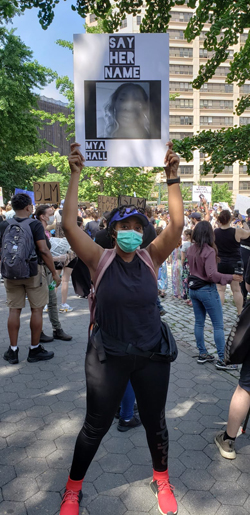 Moreno, who graduated this spring with a major in Theater and a minor in Journalism, had always enjoyed serving as a resource for others. “For transfer and new student orientation I was the person on campus who pointed people to all the different offices they needed to go to for enrollment and events,” she said.
Moreno, who graduated this spring with a major in Theater and a minor in Journalism, had always enjoyed serving as a resource for others. “For transfer and new student orientation I was the person on campus who pointed people to all the different offices they needed to go to for enrollment and events,” she said.
So she applied that approach to the BLM movement too. First, she shifted the focus of a podcast she had started for a radio production class to Breonna Taylor and #SayHerName, shining a light on all the Black women killed by police violence. “I wanted to make sure that people knew about other victims, particularly females,” she says. “That was a big thing for me—I feel like a lot of men don’t understand that this happens to females as well.”
Moreno also pressed her social media followers for questions they had about the movement. She researched answers and directed them to sites they could go to for more information about upcoming protests and a hodgepodge of practical issues, like what to wear, protective shields or goggles. “There were so many different questions about how to show up,” she said.
She had some of those same questions herself when she went to her first protest march, with #SayHerName signs in tow. “I definitely had hesitations going,” she said, which included everything from whether she could keep up, physically, to whether it would be safe given the COVID-19 crisis, to whether it would be safe period. “You’re always worried about the people around you who don’t support your cause,” she said.
Still she was surprised to see how organized community groups were: They handed out a list of demands for police reforms, signs for those who hadn’t brought their own, and supplies, including goggles and water. “Everyone knew what we were doing next, even with the chants we used,” Moreno said. It was nothing like the mass chaos that some news outlets suggested.
Moreno, who recently started a master’s degree program with Teach for America and plans to become a writing teacher, says she wants to continue to participate. In the future, though, she plans to take more of her friends and to even pass Black Lives Matter messaging onto her students. “BLM is not just a trend,” she said, but work that would play out over a lifetime.


